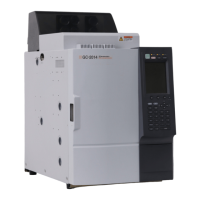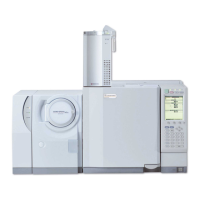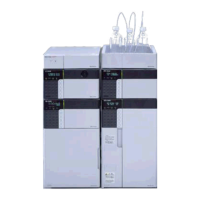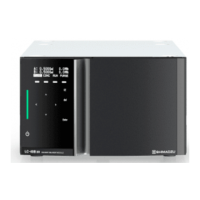7
1 Installation
1.3
1.
GC-2014
1.3Gas Supply Plumbing
Q Supply gases
The following gases and associated purity values are required to maintain the optimum
performance of the unit.
For detectors other than FID and TCD, refer to the instruction manual corresponding to each detector.
1. Gas types
•Carrier gas types
(Packed FID analysis)
Both helium and nitrogen can be used. Nitrogen is more reasonable in terms of price.
(Packed TCD analysis)
Using helium or hydrogen as carrier gas helps analyzing other materials at high
sensitivity. Because hydrogen is flammable, helium is generally used for safety.
However, to analyze helium or hydrogen, use nitrogen or argon as carrier gas. Nitrogen
is convenient to analyze minor components in the air because the nitrogen peak is not
detected when it is used as carrier gas.
(Capillary analysis)
Helium is the most suitable for separation.
Although nitrogen, which is more reasonable than helium, can also be used, the optimum
separation conditions may not be reached.
•Makeup gas types
(Capillary FID)
Both helium and nitrogen can be used. Nitrogen has a slightly higher sensitivity.
(Capillary TCD)
The same gas is used as makeup gas and reference gas for capillary TCD.
Select a type of gas by the same method to select carrier gas.
2. Gas purity
Helium (carrier gas, makeup gas) : 99.995 % or higher
Nitrogen (carrier gas, makeup gas) : 99.995 % or higher
Argon (carrier gas, makeup gas) : 99.995 % or higher
Hydrogen (FID detector gas) : 99.995 % or higher
Air (FID detector gas) : Dry air (oil and other organic components eliminated)
Compressed air(must be suppressed by an oil-free
compressor and dehumidified)
CAUTION
1.Gas supply pressure should not exceed the maximum pressure
listed below.
Excessive pressure may break pressure control valve or other parts.
2.When sharing a gas source with other instruments, check
specifications of all instruments to be used including this unit and
supply gas so that requirements of all the instruments can be
satisfied at the same time.
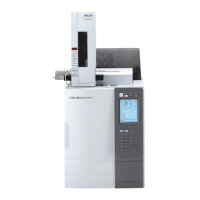
